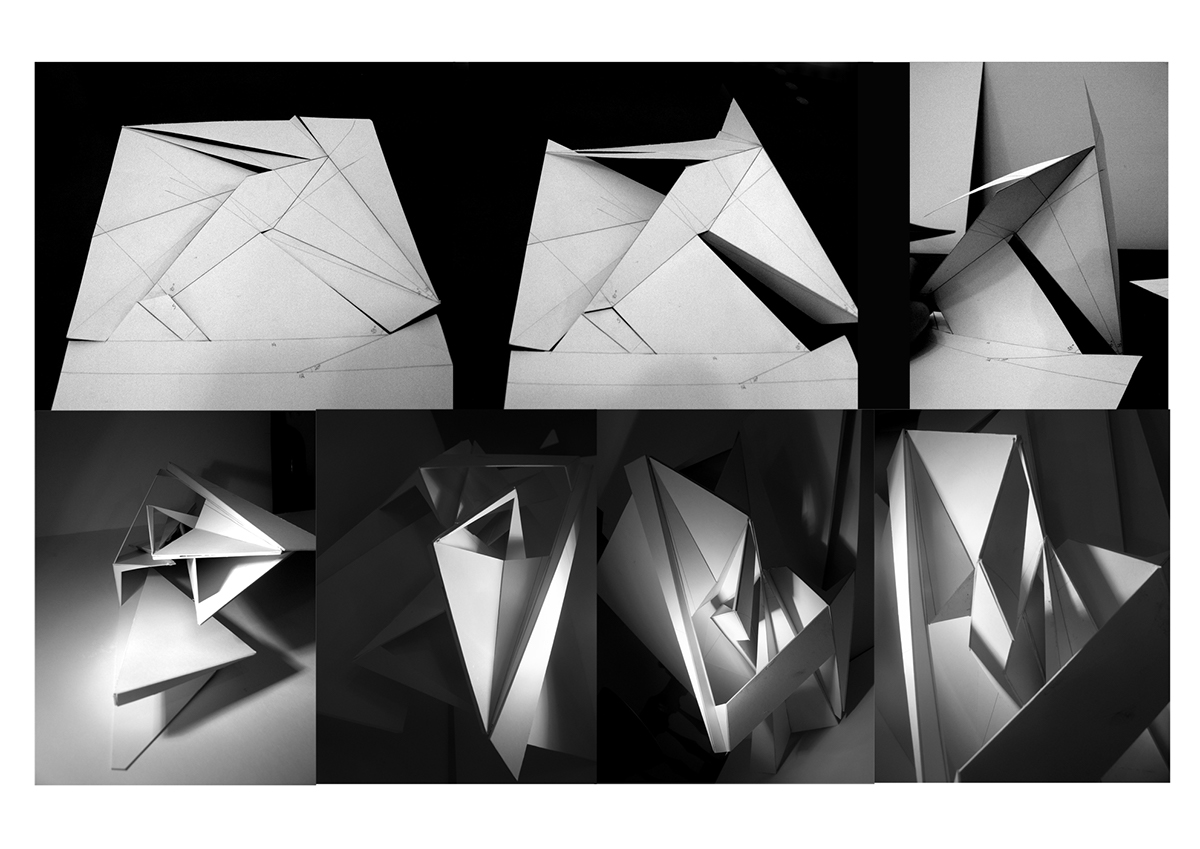Time Machine Prison in the Desert
My thesis project is a disciplinary institute located in the desert and based on Panopticism in Michel Foucault’s
Discipline and Punish. Functionally, prisoners in their cells occupy the periphery, while prison officers are
based in the center. By one-way mirror walls inspectors are invisible to prisoners, and hence the feeling
of being exposed. This way inspectors have a perfect view of every cell, without the inmates knowing
whether they are being watched or not, hence the Panopticon concept- which means: to observe all.
The process started with systematic folding of planes in precise angles derived from a study of sand
dunes formations, angle of repose and wind direction. The ever moving sand interacts with these folds,
accumulates beneath them, drips through their openings and at times buries them wiping the identity of
the architecture.
Series of grids of holes scatter on a flat plane’s surface creating the interface between the folds above
ground level and prison cells underground. These tiny holes allow for fine sand to pour through them from
an upper compartment to a lower one contained within every cell transforming the whole prison to act as a
glass-hour time machine calculating the sentence period of each prisoner.
The glass hour provides a glimpse of life in the simplest terms. By watching the sand flow effortlessly due
to the force of gravity, one can visually experience the 3 truths of time; past, present and future. As the
future is filled up, it becomes the past at the same pace. Within this context, time cannot be separated from
space dimension.
An inmate with a 2 year sentence will have their hourglass accumulating sand over the period of 2 years. Sand's sustainabiliy within the glasshour container is reflected by the inmate's mannerism. For instance, if a punishment is applied on them, a portion of the sand is vaccumed out of the container increasing the time required fo it to be filled with sand. ANy sand emptied out of the sand cube decreases the mass of sand in relation to the cube's volume leading to more time needed for the glasshour to be filled.
The project consists of 5 stages, each consisting of a different number of folds and different stages of complexity evolving over time. The ones with the most folds create more trapments , therefore they represent the life sentence cells . Those cells allow for the sand to enter creating sand showers through which prisoners could get buried under eventually. This project was highly debated around whether the sand is interpreted as a torture element of suffocation or a healing element of sand burial.
Process and technique:
By adopting contemporary practices, such as modeling in physical and digital form, the work of the studio attempted to go beyond some of the preconceived boundaries of architecture, notably that of the traditional sequence of site, program and solution. A diversity of architectural approaches was expected. Contemporary architectural processes should be capable to accommodate transformation, adaptation, deterioration and unpredictable, inconsistent or changeable events and conditions. The studio continued to establish innovative and critical positions between analogue and digital design. The technique employed resembled a mimetic process that was resulted from a new approach of digital poetics. Rather than aiming for comprehensive master plans, students were asked to grow the work from inside out with a focus on 3d modeling and atmospherics.







































